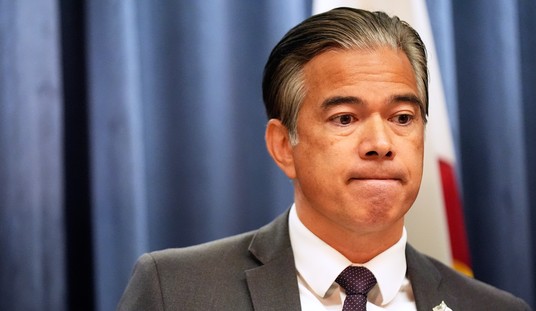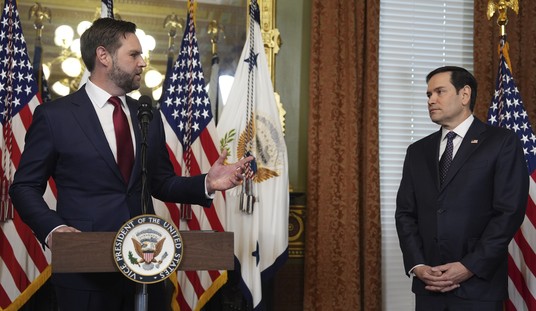When exactly did the shooting begin in the deadly confrontation that has fueled riots and unrest in Ferguson, Missouri? The results of the forensic investigation show that the first shots came in the police car as part of the struggle claimed by the officer involved in the shooting of Michael Brown, which tends to corroborate his version of the events that resulted in the death of the teen, a version first reported by the New York Times last week. That may not be enough to get Darren Wilson entirely off the hook, however:
The official autopsy and toxicology report on Michael Brown shows he was first shot at close range and had marijuana in his system. Ferguson Police Officer Darren Wilson has told investigators that Brown went for his gun inside the police vehicle. The autopsy shows two close-range wounds, one of which has discharge material inside it consistent with a shot as close as one inch. Brown’s blood was also found on the gun. The evidence supports Wilson’s claim that Brown’s hand was on or near his gun. A forensic pathologist who reviewed the autopsy says the wounds don’t show that Brown was running away or had his hands up. The wound at the top of his head indicate he was falling forward or lunging toward the shooter. A shot in the arm exited from the inner forearm, indicating his palms were not out when he was hit, the pathologist said.
Hard work by @ChristineDByers to get #MikeBrown autopsy documents, complete report posted soon to @stltoday #Ferguson pic.twitter.com/VfSG20eiyz
— David Carson (@PDPJ) October 22, 2014
The St. Louis Post-Dispatch’s report is behind a pay wall (the summary above comes from the Daily Beast link), but the New York Daily News picked it up as well:
A source familiar with Wilson’s version of events, as told to investigators, said the ‘incredibly strong’ teen punched Wilson and then pressed the barrel of the cop’s gun against the officer’s hip and fought for control of the trigger, the Post-Dispatch said. …
Separately, St. Louis medical examiner Dr. Michael Graham – not part of the official investigation – reviewed the autopsy report on Tuesday and told the Post-Dispatch its finding “does support that there was a significant altercation at the car.”
A forensic pathologist in San Francisco, Dr. Judy Melinek, said the autopsy “supports the fact that this guy is reaching for the gun, if he has gunpowder particulate material in the wound.”
This fits Wilson’s version of events, which claims that the shooting started in the car and that Brown took off only to charge at him again in the street. Brown’s blood was not just on the gun, but also inside the patrol car, neither of which would have happened had the shooting all been in the street. Not only does that refute some of the claims made from the Brown family’s private autopsy report, but Melinek asserts that the “hands up, don’t shoot” posture adopted by Ferguson protesters may not have any connection to what actually happened in the shooting:
Melinek also said Brown was facing the officer, not running away, when he was shot twice in the head, twice more in the chest and once in the upper right arm, according to the Post-Dispatch. …
The shooting stirred three months of unrest in the St. Louis area and gave rise to a popular chant among protesters: “Hands up, don’t shoot.”
This may explain why the Department of Justice has shown significant reluctance to charge Wilson with civil-rights violations. The NYT story on Friday afternoon — a typical Friday-night news dump for this kind of bad news for an administration — alluded to some of the facts that emerged in the Post-Dispatch report this morning. The fact that Brown’s blood was found in the patrol car was in the third paragraph, while the Times buried the lede a bit farther in paragraph seven:
The officials said that while the federal investigation was continuing, the evidence so far did not support civil rights charges against Officer Wilson. To press charges, the Justice Department would need to clear a high bar, proving that Officer Wilson willfully violated Mr. Brown’s civil rights when he shot him.
If the fight started in the car and Brown made a play for the gun, then it’s not a civil-rights case. That doesn’t mean the final shots were necessarily justified, though, which is an issue for the local grand jury to consider. CNN’s legal analyst lays out the problem for Wilson:
“That tends to support any testimony that there was some kind of scuffle in the police car,” CNN legal analyst Danny Cevallos said. “And if so, that tends to support Officer Wilson’s testimony and his justification for using deadly force.”
But Cevallos said the details about Brown’s blood on the officer’s gun and on his uniform might only go so far in helping the officer’s case.
“Ultimately, that officer will have to come up with justification not for firing his gun the first time, but for each and every bullet that came out of his firearm — whether at the car or away from the car,” he said.
That’s true, as police officers (like private citizens) have to stop shooting when the threat is neutralized. But that will very much depend on what actually happened when Brown turned around on that street. If he had his hands up in a surrender pose as Ferguson protesters claim, then Wilson will still face prosecution for homicide in some form. If these autopsy results show Brown was charging after originally attempting to go for Wilson’s gun in the initial struggle, though, it will be impossible for courts to conclude that Wilson couldn’t have found that to be a reasonable threat to his safety, especially after being injured in the initial assault. Small wonder that the DoJ wants to wash its hands of the Brown case, and to do so as quietly as possible.







Join the conversation as a VIP Member